|
Spring is in the air, which means that soon the lawn chemical trucks will be arriving to make their first applications in neighborhoods all over the country. Even though they may only be applied to your neighbors property, pesticides still effect all of us through drift and movement into the environment, even tracking into the homes of yards where they are not used. How can we talk to neighbors about their lawn chemical services in a way that they might actually listen? ✅ Build a relationship - Get to know your neighbors before bringing up pesticides. Once someone knows you they will be more receptive to input. ✅ Approach them calmly - It's natural to be upset about the effects their pesticide use may be having on you or the environment in your neighborhood, but having a calm, rational conversation is the way to go. ✅ Ask questions - Here are a few suggestions:
✅ Be patient - It takes time for people to learn and change their minds. It's hard for most people to accept new information. Be gentle, and don't get impatient if they don't respond at first. Share a little here and there, and try not to overwhelm them. ✅ Share solutions - Have alternatives ready for them. Find resources here and here. Offer your neighbor a helping hand so they don't feel like they have to search for information. It's fall, and the task of readying our properties for winter is at hand. We've all seen the #LeaveTheLeaves posts, but there are few things everyone should know about how to do it best. Q: Should I “leave the leaves” in my gardens?
A: Yes! Leaves provide valuable food and shelter for bees, moths, butterflies and other wildlife. It’s best to leave them there year-round to naturally decompose and return nutrients to the soil. Q: Should I just leave all the leaves everywhere they land and skip clean-up? A: Leaving the leaves in our gardens will benefit wildlife, but that doesn’t mean you shouldn’t clean up any leaves at all! Man-made hardscapes like walkways, patios, driveways, sidewalks and streets still need to be swept clean for safety reasons, and to keep our aquatic ecosystems healthy. Leaves have beneficial nutrients like nitrogen and phosphorus that they release when they break down. This is good for plants and soil when we leave them in gardens, or in thin layers on a lawn. But if these same nutrients are allowed to wash into our stormwater systems, just like the nitrogen and phosphorus that leach from synthetic fertilizer applications, they can have a detrimental effect. Leaves are natural, but our watersheds are not able to process the excess nutrients from all neighborhoods in our municipal stormwater systems. Removal of leaf litter from streets and hardscapes in the fall can reduce phosphorus loads by over 80% to protect water quality. We all must do our part to rake and sweep the leaves from these areas while we “leave the leaves” in the places where they belong. This way, we support pollinators and protect biodiversity on land and in our watersheds. Q: Should I cut back the stems on my plants in the fall? A: Since pollinators use stems as nesting material and birds eat the seeds of native plants throughout the winter, ideally we should try to leave stems standing in our perennial gardens and not remove them wherever possible. Q: I left the leaves all winter, should I clean up in spring? A: Best practice is to leave the leaves permanently in garden beds. If leaves are too thick and plants may be smothered or for some other reason need to be cleaned up, wait as long as you can to remove leaves. Try to keep those leaves on the property by adding them to natural areas in the yard, or to wire bins where any remaining creatures are able to emerge from the leaf litter when they are ready. Stems can be left standing as well, or only cut part way if you must make compromises with HOAs. New growth will come up around them as they decompose. Try to leave as much natural plant material in garden beds as you can, while maintaining edges and giving “cues to care.” Q: What about ticks, won’t I have a problem if I don’t remove all the leaves? A: Ticks are definitely a concern since they can transmit multiple infections (See Help! I’ve Gotten A Tick Bite, Now What?) and we need to take personal protective measures when outdoors to prevent bites like wearing repellant, tucking pants into socks, doing regular tick checks, etc. Penn State says, “Ticks prefer cool, wet, shady places and are mostly found in densely wooded areas. They like stonewalls, and woodpiles but are also found in grassy or brushy areas. The unmaintained edge between woodland or brush and your lawn, called the ecotone, is the next highest in tick population. Ornamental vegetation (like native perennials) and the lawn have the least number of ticks. Ticks don’t like open, sunny areas. Knowing the ticks’ favorite habitats can help you make your property more tick-resistant.” As far as our yards are concerned, habitat modification and creating a healthy balanced ecosystem is our best bet to keeping them in check. Separating ‘wild’ areas of the yard from gardens and lawn areas by a mulch border is recommended (See Create a Tick Free Yard). Spraying with insecticides does not reduce tick encounters, and whether synthetic or natural, broad spectrum insecticides will kill pollinators and other beneficial insects. Excerpted from the Pollinator Friendly Yards FAQ. Check out the PFY group on Facebook to learn more about supporting biodiversity and organic landscaping practices. While most insects are beneficial, there are those that can transmit diseases to humans, like ticks. It's important we prevent tick bites, but using toxic compounds presents another set of risks. Let's talk about the safest ways to keep ourselves, families, and pets safe from tick borne diseases. (**See below for tips and safer product examples**) Ticks can transmit many harmful diseases to humans, like Lyme disease, Rocky Mountain spotted fever and more. Most often, DEET and synthetic pyrethroids like permethrin are recommended to prevent tick bites - but these commonly used chemicals can be very harmful in their own right. Repellents and pesticides often contain 'inert' ingredients that are undisclosed, and consideration of exposures to combinations and mixtures are not part of the registration process for the active ingredients. This can make it even more difficult to assess the risk of using a product. It is imperative that we do what we can to prevent the serious and debilitating illnesses spread by ticks, but the answer is not to expose ourselves, children, pets and the environment to chronic low doses of toxic chemicals over a lifetime. Luckily, it's easier than ever to make responsible choices that will keep us safe from both tick bites and toxic chemicals. Here are some suggested tips, and examples of products to get you started.
Click on the titles below to expand and view safer product suggestions AlTERNATIVES TO DEET
Examples of products with ingredients that are alternatives to synthetic DEET, like essential oils and plant extracts. Other alternative active ingredients like Picaridin, IR3535 and Oil of Lemon Eucalyptus (OLE) or para-menthane-3,8-diol (PMD, the synthesized version of OLE) may also be considered as options. Adios All Terrain Badger Balm Buzz Away Extreme Cedarcide Green Mountain Repellants Just Naturals Murphy's Naturals lemon eucalyptus oil Nantucket Spider (citronella free) Nature's Cloak Ticks N All Wondercide Mamavation's list of DEET-free Bug Sprays (See the "Best" list) AlTERNATIVES TO PERMETHRIN
BioUD is a commercially available alternative to use on clothing instead of treating with permethrin. The active ingredient is 2-undecanone, a naturally occurring compound isolated from tomato plants. It has been found to be as effective as DEET and more effective than permethrin in field trials. Least toxic INSEcticides
Examples of products with ingredients that are alternatives to synthetic pyrethroids that are allowed by NOFA Standards for organic land care. Habitat modification is preferred. Spraying, even with a natural insecticide product, should be a last line of defense, only to be used selectively and judiciously to protect pollinators and other beneficial insects. Always follow label directions exactly if applying a product yourself. Essentria IC3 (found to be as effective as bifenthrin at reducing ticks) Cedar Oil Industries Mosquito Barrier Cedarcide Wondercide Beneficial nematodes safer Flea & Tick treatments for pets
protective clothing
For those who may have sensitivity to essential oils or other naturally derived repellents, or when you just want some additional protection, wearable netting like this is also an option. Lists are for educational purposes and suggestions only, not an endorsement of a specific company, product or brand. REMEMBER: Spraying Alone is Ineffective - Personal Protective Measures and Habitat Modification Are Always Necessary - Habitat modification is your first line of defense and should come before spraying anything, even natural products. A randomized control study conducted on the effectiveness of bifrenthrin over the course of two years found that while the pesticides did reduce the number of ticks, they did not make any significant difference in the number of tick encounters, or the incidence of tick-borne illness. This suggests that people are being exposed in other places, not just at home. This underscores the need for appropriate use of repellents and least-toxic management strategies for both homeowners and public recreational areas. Synthetic pyrethroids, like bifenthrin used in the study previously mentioned, are commonly used as a yard and clothing treatment for ticks. Like the widely used permethrin, they work by by interfering with basic nerve cell functioning. Studies in mice and rats show that sub-lethal intoxication leads to aggression, hypersensitivity to external stimulation, whole-body tremor, convulsions and paralysis. Permethrin binds tightly to soil and household dust. Permethrin is highly toxic to bees, fish and aquatic organisms. Studies on permethrin have linked it to increased risk of neurodevelopmental disorders, and shown it can interfere with the hormones in our bodies. A study of the chemical breakdown products of permethrin suggests they may even be 100x more active as an endocrine disruptor than the parent chemical. Exposure to both DEET and permethrin combined can amplify their toxicity. DEET has been linked to brain dysfunction, and reproductive issues in worms. Layering our protective measures and choosing safer active ingredients like cedar oil, oil of lemon eucalyptus, or 2-undecanone can help us avoid exposure to toxic pesticides while also being effective at repelling ticks. Let’s all do our part to increase awareness of the serious threat of both tick-borne illness and pesticide exposure, and use that knowledge to protect ourselves and others. For more information see Mosquitoes & Ticks Human activity has resulted in a planetary crisis. This is very serious, though not hopeless, but we must act. Land use change drives about 30% of biodiversity loss, so not only is it the largest contributing factor, it is also one that we can control. Any improvements we make on the small scale can have a collective impact. Even if you don't own any land yourself, these practices can be implemented in your community parks, schoolyards and private land areas to contribute to planetary health. 1. GO ORGANIC Organic land care is a must if you want to regenerate and protect our environment. Organic practices begin with soil health. Cultural practices are also a key component of managing a landscape organically. Learn about organic land care: Homeowner Resources Landscapes Organic Land Care Project 2. SHRINK THE LAWN Turf grass is an ideal eco-friendly and durable surface for athletic playing fields, but we typically have more lawn than we use or need around our homes. Why not shrink the lawn area and plant a pollinator garden? In some areas of the country, removing the lawn and replacing with drought tolerant landscaping is encouraged. Take a few minutes to assess your landscape and decide how much (if any) lawn you need, and begin a plan to design some gardens! 3. PLANT NATIVE Chances are, many of the plants you find at the local nursery will not support biodiversity, and some may even harm it! Yes, non-native, and even invasive species may be sold to consumers in a garden store or online. Buyer beware! Just because we find a plant appealing, doesn't mean it will be beneficial to our native wildlife. A minimum of 70% plants native to our ecoregion are required to support nesting birds.
Keystone species like oak trees can support over 500 different lepidoptera (moth and butterfly) species by providing food for their larval stages (caterpillars). That's food for baby birds! Find keystone plant species for your ecoregion here. The more native plants you can add, the better! Insects are declining at an alarming rate! Many of our pollinators are threatened or endangered, like the rusty-patched bumblebee and the monarch butterfly. The indigenous plants that evolved with these pollinators and other wildlife are what will best support them to increase their numbers, since they provide precisely the food and habitat they need and at the right times. Climate change is creating more challenges for our pollinators and they need us to restore habitat now more than ever. No yard is too small. Every yard and every person can help! Read more on our Biodiversity page. Insect species are in trouble. Many of our 4,000 North American bee species are threatened, or even endangered. Monarch butterflies have also seen a drastic decline. Researchers have found a dramatic decline in insects worldwide. Scientists attribute this to a variety of factors – climate change, modern agricultural practices, habitat loss and pesticide use. Some of these factors are not easily addressed, while others are very much within our control. There are many things that we as individuals can do to help. What we do in our own back yards (and front yards!) can make a difference. Here are some suggestions we can all implement ourselves to assist our valuable insect populations. ✅DITCH THE PESTICIDES Pesticides are toxic to our insect friends and totally unnecessary for cosmetic purposes. If you find yourself faced with a pest problem that must be managed it is important to avoid use of products that can harm beneficial organisms in our landscapes. The vast majority of insects in your yard are helpful. They provide valuable ecosystem services that benefit us like pollination, pest control, soil aeration, nutrient recycling and more. Organic IPM is a least toxic way of managing pests. There are five main steps. First, identify the pest. Second, learn about the pest’s biology. Third, determine the level you are able to tolerate. Fourth, modify your habitat to deter the pest. Fifth, monitor pest abundance and damage, if any. Often times after following these steps, control measures are not needed. Some least toxic controls include exclusion, traps, handpicking, vacuuming, water sprays, and judicious pruning. If a pest still remains above tolerance levels after implementing these options, then an organic compatible product may be considered. This would include OMRI certified and minimum risk (FIFRA 25(b) exempt) products. Follow all label directions exactly to avoid harming beneficial and non-target organisms. See Help for Homeowners for more information. ✅ PLANT NATIVE When planning your garden, choose varieties of trees, shrubs, flowers and grasses that are native to your region. These will help support adult pollinators with nectar and habitat, and provide food for their larval stages. Insects need these host plants to be able to breed and increase their numbers. They will require less water and be more resistant to pests and disease than exotic imported ornamental plants. The caterpillars the plants host are food for baby birds. Be sure to provide a variety of flowers and bloom times. The greater the diversity of native plants, the more native pollinators they can support. Avoid cultivars of natives and opt for the straight or wild species. For example, you want to purchase Asclepias tuberosa, not Asclepias tuberosa 'Ice Ballet.' Your state's native plant society can help you find plants. Be sure plants you purchase have not been treated with any systemic pesticides like neonicotinoids or fungicides. ✅ LEAVE THE LEAVES Insects need leaf litter for egg laying and hibernating. A leaf free yard is not going to provide habitat to beneficial insects. Rake leaves into the “wild” areas of your yard and leave them over the winter or permanently when possible. Leave stems standing in your gardens over the winter. Birds eat the seed heads and insects nest in stems to hibernate. Fireflies nest in the ground and lay eggs in rotting logs. Leave a few to decompose in your garden. If you must clean up some areas in spring, wait until temperatures are reliably in the 50’s during the day, this is usually around mid to late April. Simplify your fall leaf cleanup routine, and you can enjoy a more diverse beneficial insect population visiting your garden. Allowing dead trees (even just portions of them if they pose a danger of falling) or limbs to stay where they are can also provide year round habitat for certain bee species. ✅ USE POLLINATOR FRIENDLY LANDSCAPING PRACTICES In addition to being highly polluting and disturbing neighbors and wildlife with excessive decibel levels, leaf blowers high winds damage topsoil and disturb insect habitat. Pollinators are just one of many good reasons to just say no when it comes to these machines. A pollinator friendly yard and leaf blowers don’t mix. Choose hand powered or electric equipment whenever possible. Never use lawn chemicals - organic lawns look good and are cheaper and less work to maintain. Dandelions, violets and clover are good grass companions, and they provide benefit to pollinators as well. Violets are the host plant for fritillary butterflies, and clover attracts tiny stingless beneficial wasps that prey on garden pests. Learn more about organic land care on the Northeast Organic Farming Association (NOFA) website. ✅ TURN OUT THE LIGHTS Pollinators are negatively affected by artificial outdoor lighting. Helping is a simple as flipping a switch. Set lights on a timer if needed, or install motion activated lights to reduce the impact on beneficial insects. ✅ PROVIDE A WATER SOURCE Kind of a no-brainer, yet frequently overlooked is providing a water source for insects. It’s as simple as putting out a shallow dish with some glass gems, large gravel, or rocks inside. Some people have even used sea glass. This will keep bees and other insects from drowning while they hydrate and it looks great too. Just remember to clean and fill on a regular basis.
We hope these tips will get you started in helping out our important insect friends! On July 29, Bayer announced to shareholders their intent to withdraw glyphosate from the residential use market. But what does this mean? What do we need to know? This change is about liability, not safety Werner Baumann, CEO of Bayer AG says, "“Let me be very clear that (this decision) is exclusively geared at managing litigation risk and not because of any safety concerns." Roundup will still continue to be sold to consumers Liam Condon, president of the Bayer Crop Science Division and a member of the Bayer AG board of management says that, “What is new will be the formulation or formulations and will include multiple active ingredients." The new formulation will still be sold under the Roundup brand. The new formulations will likely be a "regrettable substitution" We see this happening in municipalities often. Staff or contractors will stop using glyphosate based herbicides, and replace them with glufosinate or diquat dibromide. Products containing these active ingredients are sometimes paired with other herbicides that inhibit seed germination called preemergents, like ones with indaziflam or flumioxizan. Other glyphosate containing herbicides will still be available for sale This decision comes from the manufacturer of one glyphosate containing product, but there are many more formulations sold by other companies in the lawn and garden market. Roundup and glyphosate will still be sold This decision does not affect sales to, or use by lawn companies, municipal staff, schools, homeowners associations or other similar entities. The other thousands of toxic pesticides on the market will also continue to be used and sold The EPA has registered over 1,200 active ingredients and over 16,800 pesticide products. Glyphosate is just one of those active ingredients. While this move by Bayer to avoid liability can be seen as a win, it is not a victory. Our work is far from over. We need to continue to advocate for health protective organic practices in our communities, not banning single chemicals. Visit our Tools for Change to get started. By Youth Advocate Khadija Hassan We hear the word but do we truly know what it is? Agricultural organic matter can be known as food or soil which is produced without the interaction of chemically formulated fertilizers, antibiotics, or growth stimulants. In the process of cultivating the organic crops, the word organic can also refer to what inputs are allowed and that the land has to be managed without the treatment of synthetic materials. A lot of research has been done on what organic is but the real question should be - What are the real benefits of organic practices? According to this website, organic matter also refers to any plant or animal that resides in the soil and provides it with the nutrients that are available. It also improves the water binding quality in the soil. Additionally, according to Cornell University, the benefits can range from reducing surface crusting to enhancing aggregate stability. Those were just some of the benefits to organic soil that would help with growing crops. Another side of organic could be organic food. Eating food that has been made through the organic process can mean living a healthier life because it is grown in a sustainable way. Growing organic matter in a sustainable way means following certain regulations that ensure a green way to produce food. The link provided (https://nofa.organiclandcare.net/the-standards/) has ensured an informational way to help educate on what and what not to do regarding organic land care. It is highly recommended that you take a look at it. At the same time, organic management is better for the environment because it reduces pollution as well as using less energy. Now, it is no shock to everyone that the world contains way too much pollution and not enough solutions, but switching to organic could lead to a reduction in pollution. This would ultimately help the Earth in the long run. Additionally, all around the world there are energy crisis issues that could be solved if the governments could switch to better ideas like ensuring the use of organic management. All in all, organic management has proven to be better for the environment, better for healthier lifestyles, and healthier for the planet. I encourage farms, schools, hospitals, cities, HOAs, and homeowners to switch to organic to ensure environmental health benefits for the earth and yourselves.
The answer to that question depends on the situation. This spring when we are out in the neighborhood or at the park we may encounter someone applying pesticides. There are some things we should and should not do. Here's a breakdown. Should I take a video or picture? If there is a pesticide notification sign, especially at a park or other public place, yes, you can and should document it. If it is a worker spraying or applying a pesticide, you should proceed with caution, and think carefully before recording any video or taking photographs. Make sure you know the law in your state with regard to recording and photographing people in public places. Avoid confronting workers and never harass them while they are doing their job. Feedback should be directed to decision-makers like city council representatives, not contractors or individual staff. If you feel you must take video or photographs to document and it is legal to do so, take them from a safe distance away from any potential pesticide drift. Should I post it on social media or my website? If you took a picture of a notification sign, it's definitely reasonable to share it to alert others. Signs are up for a limited time, and many people may not be aware of applications happening. This may be the only way for them to find out, and it is more than reasonable for you to share this information. Always feel free to document and share pesticide application signs or notices wherever appropriate. If you legally took videos of workers spraying, consider if their faces are showing and how you present the photos or video. Consider your tone. Obscure faces if possible. We do not want to single out workers or shame them. They have the some of the highest pesticide exposure - and we also need to remember that more often than not, they may have been convinced that what they are applying is perfectly safe. We want groundskeepers and landscapers to adopt organic practices. This is not achieved by putting them up as a target for public outrage or ridicule on social media accounts or websites. Seriously consider this before choosing to post any pictures or videos, and always use good judgement. Should I call someone? If you suspect pesticides have been applied in a manner that is illegal, you should immediately contact your state's department of agriculture. Find your state pesticide regulatory agency here. DO NOT try to mitigate pesticide contamination by yourself. Depending on what chemicals or products were used, this may make the situation worse, and it may make it harder for investigators to collect evidence for your complaint. Some states do not accept pictures or videos as part of their report, while others do. Check to see what the law is in your state. You may wish to contact a private attorney for civil action if this is appropriate. How should I protect myself and my family? Beyond Pesticides has excellent resources here under What to Do in a Pesticide Emergency What can I do to stop toxic pesticides from being used? Visit our resources page to find tools to help you advocate for the adoption of organic landscaping practices in your city, town, school or HOA. In a word, yes! Though the word regenerative is becoming more well known and talked about, this is not a new concept. The focus of organic land care has always been to create healthy soil and ecosystems, and the standards for organic land care have always encompassed regenerative principles. Definition of Organic Land Care: "Organic Land Care is a sustainable ecological landscaping system that promotes and enhances biodiversity, biological cycles, and soil biological activity. It is based on minimal use of off-site inputs and on management practices that restore, maintain, and enhance ecological harmony and beauty in urban and suburban landscapes and gardens. “Organic” means landscaping with no synthetic pesticides of any kind (insecticides, herbicides, fungicides, etc.) and with no synthetic fertilizers or soil amendments." The idea that in land care a "regenerative" program is a step above an organic one or that these are two separate concepts is a misconception. When an organic landscaping program is implemented properly, it will regenerate degraded soil to a state of health. If a program doesn't do this, then it is not organic! As we discussed in our last blog, terms like regenerative can be used as greenwashing, or may be used to market a business or product. We must make sure that there is substance behind the terminology. If we know what organic land care is then we know that organic done right should always encompass regenerative and sustainable practices. "A key goal is to design landscapes that are regenerative, encouraging Nature’s healing processes to restore ecological balance in disturbed landscapes." NOFA Standards for Organic Land Care, 6th Edition A product swap approach, defined as a swapping out of synthetic products for natural ones, isn't going to have the resulting soil improvements that a true organic program would. Much is the same for "organic-by-neglect" which is stopping all synthetic pesticides without transitioning to an organic plan. True organic land care has many benefits, not least of all that it helps regenerate soil heath. For many modern urban landscapes, especially public lands that have seen heavy use or past applications of synthetics, organic management is needed to regenerate the soil to a state of health and to keep it that way. In this era of dramatic climate change, organic land care plays an essential role in helping to drawdown excess carbon and stop the release of other greenhouse gasses. We hope you will join the growing movement of communities working towards regenerating their landscapes with organic practices. Visit our Resources page to get started. Caveat emptor - let the buyer beware! Chances are, if you are here it is because you would like to see your community switch to organic landscaping practices. You may be in need of help from contractors, consultants, nonprofits, volunteer organizations, or others to help you with technical assistance, training and implementing an organic pilot program in a park or athletic field. When we are looking to change our communities conventional landscaping practices, there are a few pitfalls we will need to avoid. One of these is greenwashing, meaning that a person or company is making misleading claims about their products and/or services being organic when they are not so in reality. Sometimes it is our municipalities and staff that are being misled, but whatever the case, it's important to be on the lookout! While it's necessary for manufacturers, contractors and consultants to advertise themselves and their products, we must be sure that there is truth and genuine expertise behind marketing buzzwords like natural, regenerative, sustainable, eco-friendly and the like. It's important to know that we do have national organic land care standards written by experts in the field, along with an accreditation program based on them. Even so, the word organic is sometimes being used by companies and consultants that do not follow these voluntary guidelines of preferred, allowed, and prohibited practices. Just because the word organic (or any other) is being used, does not automatically mean that these standards are being met. So, how can we as consumers and advocates avoid greenwashing and undesirable outcomes for our community project? The following are a few practical tips on what to do when looking at our options. Questions Should Always Be Welcomed.
Trust But Verify.
Ask The Right Questions.
Methods and Products.
We hope that by using these tips you will be able to navigate the world of organic landscaping a bit better and make sure that your community is getting a truly organic program, products, and services. |
Archives
March 2024
Categories |
|
Non Toxic Communities is a 501 (c) (3) charitable organization
Nontoxic Communities Foundation, Inc. dba Non Toxic Communities Copyright © 2024 Non Toxic Communities - All Rights Reserved Site design by Bee Rooted | About Us | Contact Us |

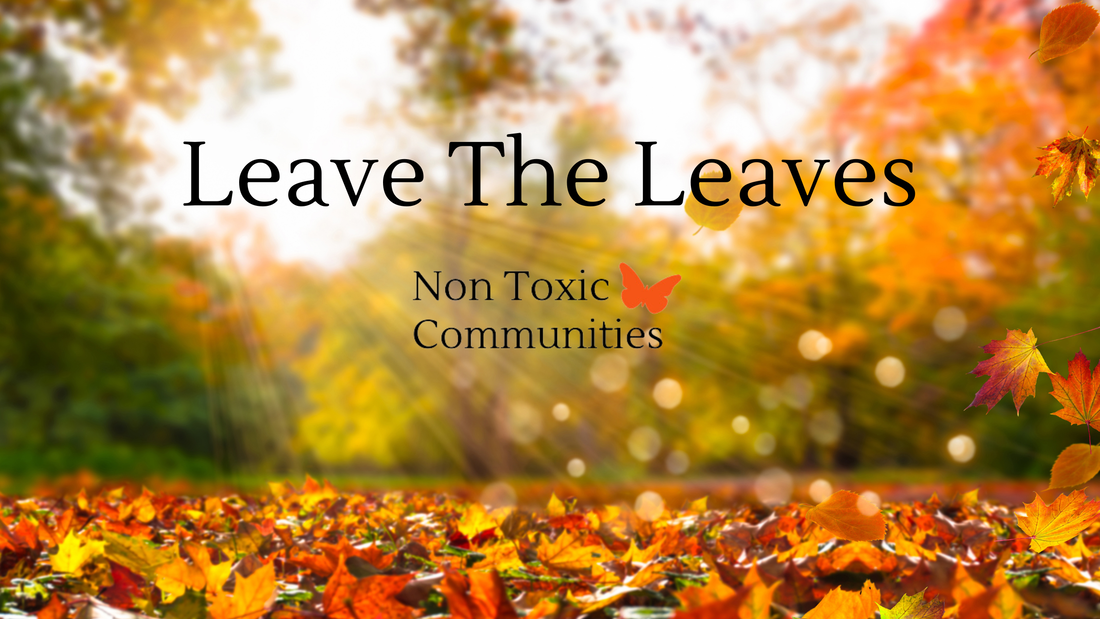

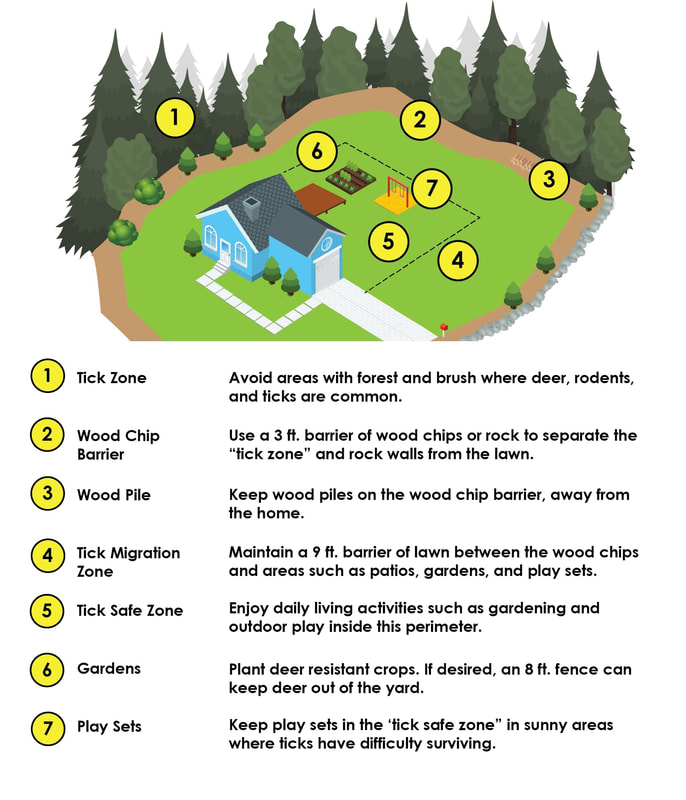




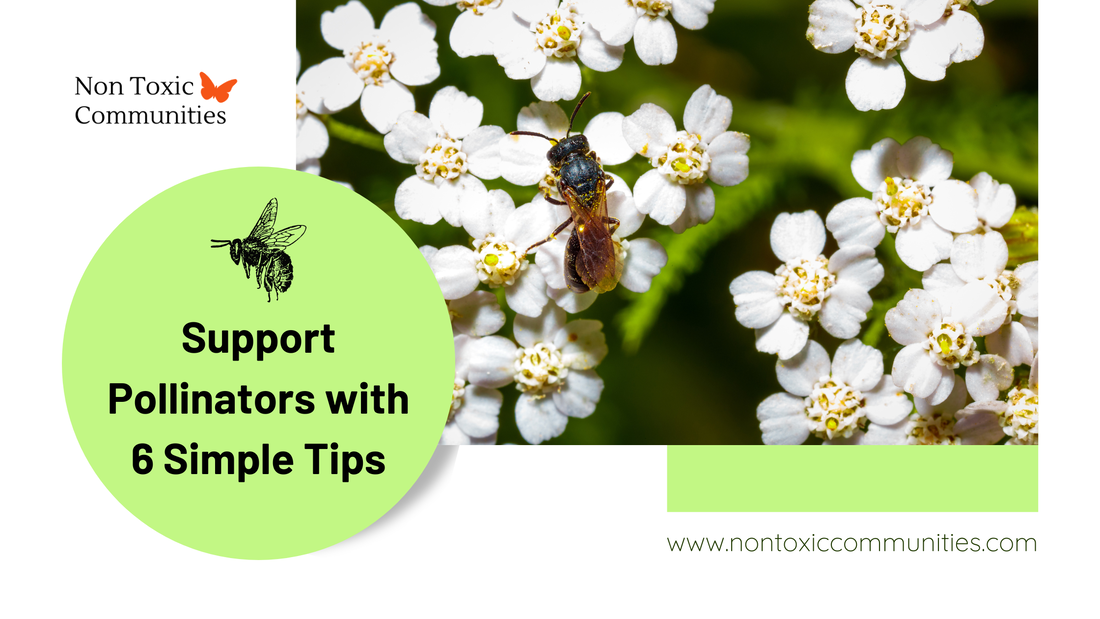

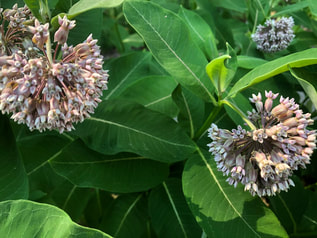




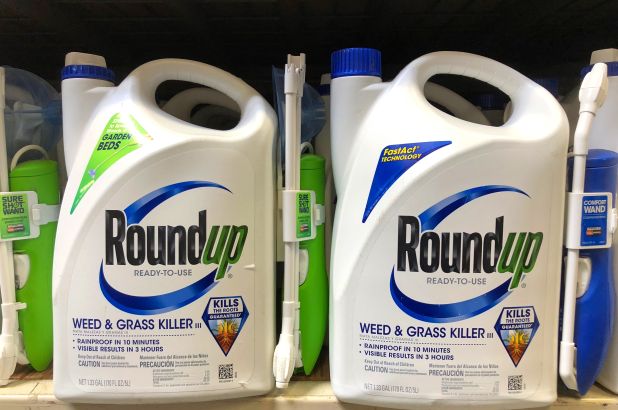



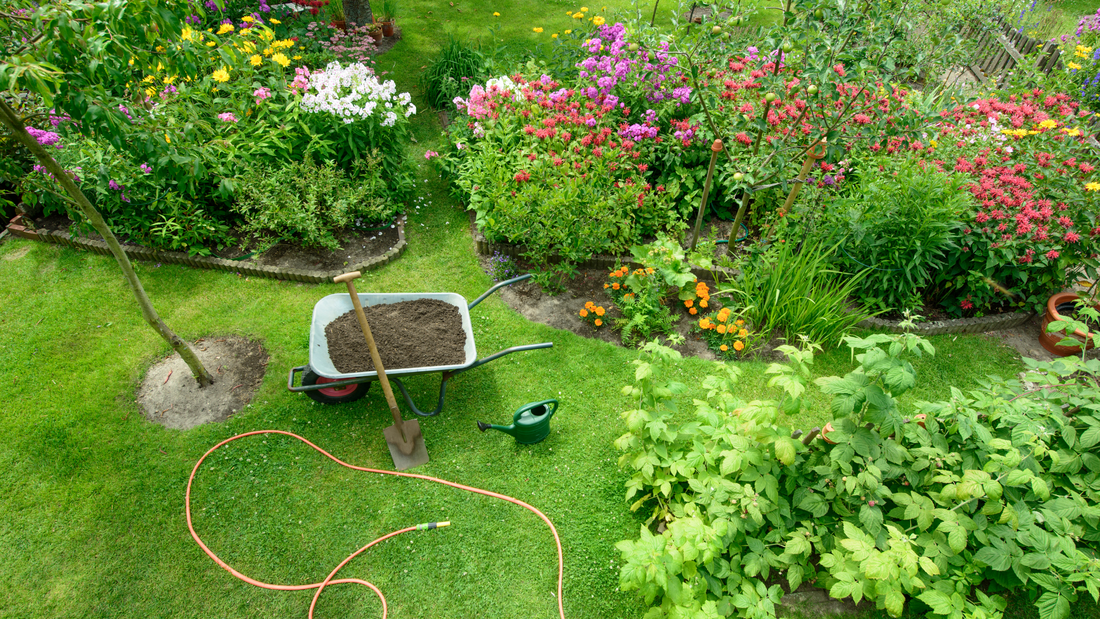

 RSS Feed
RSS Feed
